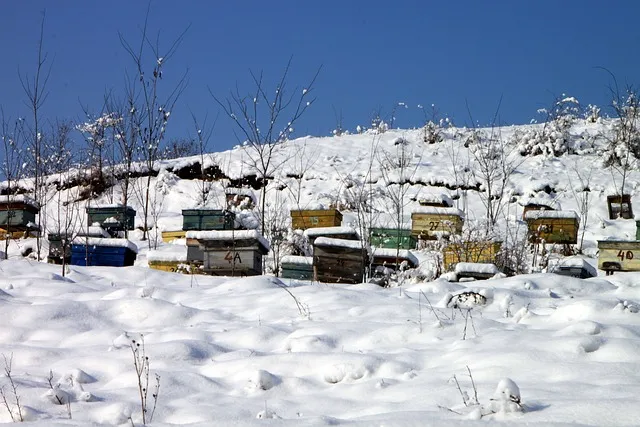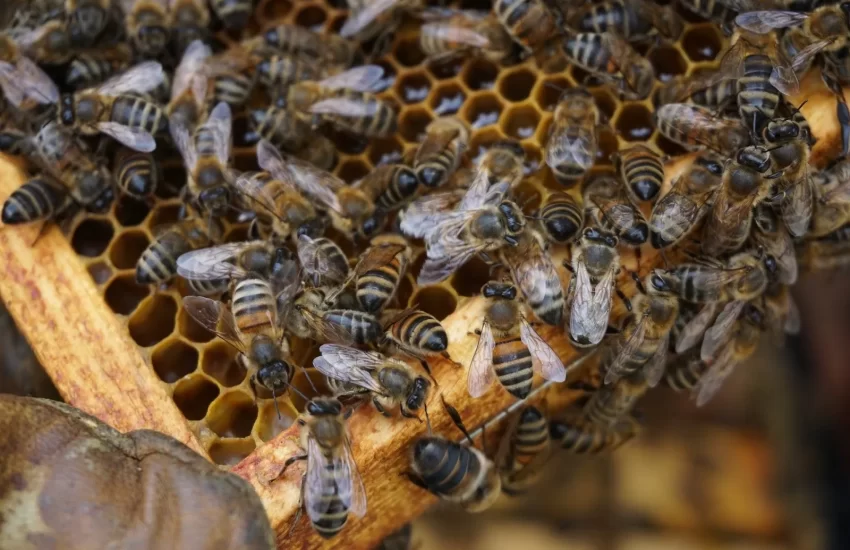How do you winterize a beehive?
Honey bees do not hibernate like other insects in winter, nor do they die out. But huddle at the hive until th cold season passes. This is not usually an easy journey for them, but a terrifying battle to make it through to spring. That is why many bee colonies die out in winter. While they do their best to plan ahead, a beekeeper’s input is also crucial to increase the chances of survival. You must consider winter’s intensity and length while prepping for winter.
Similar Articles you may like to read –
How do you keep moisture out of a beehive in the winter?
How much honey should I leave for winter?
Can a bee nuc survive the winter?
How many bees should be in a hive for winter? How many brood boxes do you need for winter?
How to wrap a beehive for cold winters
How do you winterize a beehive?
Check the Honey Reserves
Bees will require sufficient food reserves to fuel their energy requirements. They use a lot of energy to stay warm and keep her majesty the queen at a perfect temperature. The honey requirement will vary depending on the colony size, climate, and location. If you are a new beekeeper, advice from other local beekeepers will benefit you in making this decision. You should also ensure the honey reserves are well located. In the Langstroth hive, the food stores should be on the top and on either side of the bee cluster. The cluster should be able to move together in one direction to consume the food stores.
Insulate the Hive
Your hive will require insulation, especially if you live in severely cold places. You can use foam sheets, tar paper, insulating blankets, or corrugated plastic wraps. This provides extra warmth for the buzzing creatures. Avoid insulating the top or bottom of the hive. Wrapping wrongly can be detrimental to the colony. It can cause a build-up of moisture in the hive, which can freeze and kill the colony. A wet healthy environment is at a higher risk of mold. Ensure the hive is well-ventilated. some
Do Away with Unnecessary Space
In the winter season, bees require as small space as possible to keep them from wasting unnecessary energy warming the cluster. It also minimizes the space available to mice and other rodents who look for a warm place to inhabit. You reduce the space by removing empty boxes. Ensure that mouse guards and entrance reducers are in place.
Remove the Queen Excluder
If you leave a queen excluder in the hive, she will be left behind as the cluster moves up to the honey stores. She cannot survive alone in the cold.
Combine Weak Colonies
If you have two weak colonies that are too small to overwinter, it is good to combine them. It is better to overwinter one hive than lose both. You can also add a weak hive to a strong one to enhance survival, but you should ensure it is disease free not to weaken the strong hive. Again ensure there are enough food stores for both colonies not to boost a weak colony at the expense of a healthy hive.
Ensure the Hive is Well Ventilated
Poor ventilation will cause moisture to build up in the hive and rain down on your bees. This may cause them to chill to death. It is also a conducive environment for mold growth. Consider an upper entrance to allow the warm, moist air to escape. You should also put something like a newspaper to absorb the moisture.
More articles you may like to read –
What is the best bee hive design?
Do you need a Licence to keep bees?
How many bee colonies should I start with?
How deep should a bee box be?
Protect Your Hive from Prevailing Winds
While ventilation of the hive is vital, too much is harmful. Protect your bees from chilling winds by creating a windbreaker for the hive. You should also ensure the entrance is facing away from the direction of the wind. You can use straw bales, erect a temporary fence or even move the hive behind the tree line.
Treat for Mites if Necessary
Varroa mites are a huge threat to bees and can destroy a colony without proper treatment. Check your colony to see whether you need mite treatment by conducting a mite count. Though common in summer and fall, it is always good to ensure the count is low as your colony heads to winter.
Do I need to winterize a beehive?
Whether or not you need to winterize your beehive depends on various factors such as your location, climate, and the strength of your colony. In colder regions where winters are harsh, winterizing is crucial to help bees survive the cold temperatures and limited food sources. However, in milder climates, bees may be able to overwinter without much intervention. It’s essential to assess the health and population of your colony before deciding whether to winterize. Monitoring food stores, ensuring adequate insulation, and providing ventilation are key aspects of winterizing a beehive. Consulting experienced beekeepers or local beekeeping associations can provide valuable guidance tailored to your specific circumstances.
Advantages of winterizing a beehive
Winterizing your beehive can offer several benefits for both the bees and the beekeeper. By insulating the hive and reducing drafts, winterization helps bees conserve heat and maintain a stable temperature inside the hive during cold winter months. This can significantly increase the survival rate of the colony, ensuring that bees have enough food and energy reserves to last until spring. Winterizing also helps prevent moisture buildup inside the hive, reducing the risk of mold and diseases. Additionally, winterizing can help minimize stress on the bees and reduce the workload for beekeepers during the winter months, allowing both bees and beekeepers to emerge healthier and stronger in the spring.
How does temperature affect bee activity?
Temperature plays a crucial role in bee activity, influencing their behavior and overall hive dynamics. Bees are cold-blooded insects, meaning their body temperature depends on the external temperature. In cooler weather, bees become less active and may cluster together inside the hive to conserve heat. They may also reduce foraging activities and focus on maintaining the hive’s internal temperature. Conversely, warmer temperatures stimulate bee activity, prompting increased foraging and hive maintenance tasks. Extreme temperatures, whether too hot or too cold, can stress bees and affect their health and productivity. Therefore, maintaining optimal hive temperature through proper insulation and ventilation is essential for supporting healthy bee activity throughout the year.



